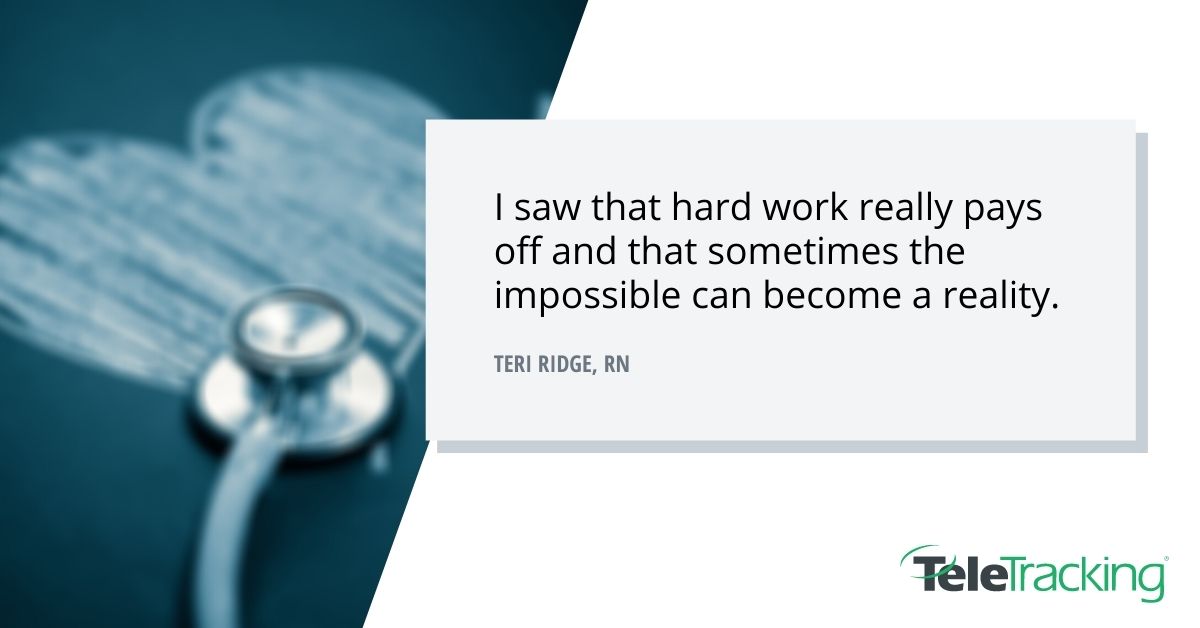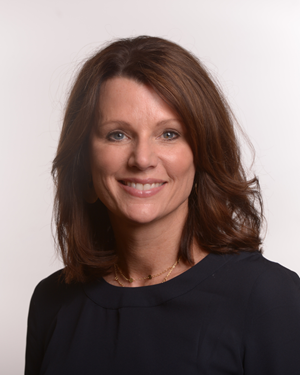Teri Ridge, Clinical Advisor – A Year Long Celebration of the Amazing Accomplishments of Nurses
We started this blog series in January as a way to recognize the nurses that we have the honor of working with every day―and to be a part of the World Health Organization’s designation of 2020 as the “Year of the Nurse and Midwife.” We always knew that nurses around the globe deliver kind, compassionate care to patients in their times of greatest need—they hold the hand of an elderly patient; dry the tears of a frightened child; and comfort grieving family members. With the COVID-19 pandemic, nurses and all healthcare professionals are on the frontlines―continuing to serve, continuing to deliver care and continuing to be there for their communities during the greatest public health crisis in a century. Our sincerest thanks to the nurses who are working hard—under very difficult conditions—to ensure that no patient will wait for the care that they need.
This month we’re pleased to be featuring Teri Ridge, RN, Clinical Advisor, National Health Systems. Before joining TeleTracking, Teri was the Manager, Patient Logistics Center at AMITA Health.

1. Why did you decide to become a nurse?
When I was 16 years old, my mom pulled some strings and was able to help me find my very first job at the hospital where she worked. The position was for an assistant in the hospital’s medical library. As a teen, that really didn’t seem very exciting to me—never did I imagine that job would become the foundation of why I wanted to become a nurse.
Nurses would come into the library and talk to me about the patients that they were caring for. I was so interested in their stories and always wanted to hear more. Some were kind enough to take me to their units and show me what they did daily. That’s when I knew that becoming a nurse is what I wanted to do—and I never looked back!
2. What are the biggest differences you’ve seen in the profession since you started your career?
As a young nurse I certainly had more time to spend with my patients—because less time was spent on a computer documenting within multiple systems. Some of my best memories were special moments shared with my patients and their families.
Staffing ratios were so different years ago. Back then, the nurse-to-patient ratio allowed you to provide the holistic care that patients needed. Nurses at the bedside today have so many more responsibilities—and that takes away the quality time they need to give to their patients.
3. What is the biggest challenge(s) facing nurses today?
I think that inadequate staffing is the biggest challenge that nurses face today. And unfortunately, it’s not just an occasional situation—but rather a daily occurrence that has become the norm in healthcare.
Those uneven ratios make nurses feel like they are working in an unsafe environment—and that they won’t be able to deliver the expected level of care. When I was a young nurse, we often worked above our ratios—and when we did, the charge nurse or nurse educator helped out. Today, charge nurses have full patient assignments, as well as additional tasks, and they aren’t able to assist in the same way.
4. What do you think can be done to solve the nursing shortage?
I have seen first-hand how the onboarding and training of new nurses becomes compromised when leaders are simultaneously dealing with a staffing crisis. These new nurses burn out before they even come out of orientation. Some are even taken out of orientation early to help staff their new unit. The result is that many new nurses end up leaving the bedside after only a few months to pursue an advanced degree or sadly, leave the profession altogether.
There needs to be a better way to identify career paths for these new grads and find ways to keep them within the system. Nursing retention has become such a hot topic and there are so many theories as to what will keep nurses in the profession. Addressing the increase in staffing patterns and career advancement are just a few that come to mind as beginning steppingstones.
5. Share a patient story that has impacted you personally.
There are so many that come to mind throughout my 26 years in the profession. I think about so many of my patients and families on a regular basis—people that impacted not only myself but my family as well. One that always comes to mind is a little boy that I took care of at the Children’s Hospital. He was a chronic patient with heart defects and was often in and out of the cardiac unit. We did primary nursing, so every time I worked, I knew he would be assigned to me. His primary caregiver was his grandfather, because his mother was unable to care for him due to addiction.
There were several discussions with the social work team that it may be better for him to be in a home because they didn’t feel that his grandfather could provide the care he needed. I was determined to prove them wrong. I spent countless hours teaching the grandfather everything he needed to know. This included how to take vitals, give tube feedings, change a trach—overwhelming to say the least for the average person—but he was determined to take his grandson home and care for him.
After a few weeks and multiple return demonstrations, he proved that he was able to provide the necessary care and was granted the authority to take him home. It was probably the most rewarding thing I have ever done. I became so close to this little boy and his grandfather and I couldn’t imagine them being separated. This story showed me that hard work really pays off and that sometimes the impossible can become a reality.
6. The World Health Organization has designated 2020 the International Year of the Nurse and the Midwife. Why is this type of recognition so important?
I don’t think this recognition could come at a better time considering the current crisis that our front-line staff are experiencing on a day-to-day basis. It’s important to know that half of the healthcare shortage that is projected for the year 2030 are nurses. My hope is that world leaders will come together to make significant investments in nursing—as we know they are the backbone of every health system.
7. How does TeleTracking help nurses and other health professionals deliver a better patient experience?
Prior to joining TeleTracking, I worked in patient flow for years before my health system invested in TeleTracking. I spent much of my time calling nurses or other members of the team regarding a new patient being assigned to their unit. I never really quantified how much time I was taking away from those nurses and their ability to provide care to their patients. Once we installed TeleTracking, everything was automated. I didn’t have to call and bother them with details about the next patient that was going to arrive on their unit. They received everything they needed to know on their own personal device without ever having to talk to me. All of those minutes added up and gave them back important time to provide vital care. TeleTracking also provides caregivers with a real-time communication tool that enables them to provide updates and share important information with patients and their families.
8.How are TeleTracking’s health system command centers helping improve access across the care continuum?
Health systems can no longer afford to function independently. A common theme that I hear from systems is that without a centralized command center they don’t know how many patients they are losing or where they are going. TeleTracking powered command centers provide visibility to every bed within the network—and that ensures that patients can receive the care that they need in a timely manner. Minutes do matter when it comes to emergent situations and the faster a patient accesses care, the better the outcome will be. The same stands true for a patient needing the next level of care within their hospital stay or if they need to go to a post-acute facility. The more efficient this movement across the continuum, the better the patient outcomes will be! TeleTracking’s visibility also enables systems to effectively load balance their patients to the appropriate hospital. By doing so, hospitals have the ability to impact wait times while increasing both patient and physician satisfaction.
More about this blog post
About the Expert
 Teri Ridge, RN
Teri Ridge, RN
clinical advisor, national health systems
Teri Ridge, RN, Clinical Advisor, National Health Systems has more than 26 years of healthcare experience. Before joining TeleTracking, Teri was a Patient Placement Coordinator at AMITA Health, before taking on the role of Manager, Patient Logistics Center. She has a BS in Nursing from DePaul University.
We're glad you're enjoying our resources! Please tell us more about you to access our full library.
This will allow us to personalize your experience on TeleTracking.com. Of course, we will never sell your information and you can opt-out at any time. Need help now? Contact a Patient Flow expert.
Leaving the website
You're about to leave this website, to one of our affiliates or another information source.